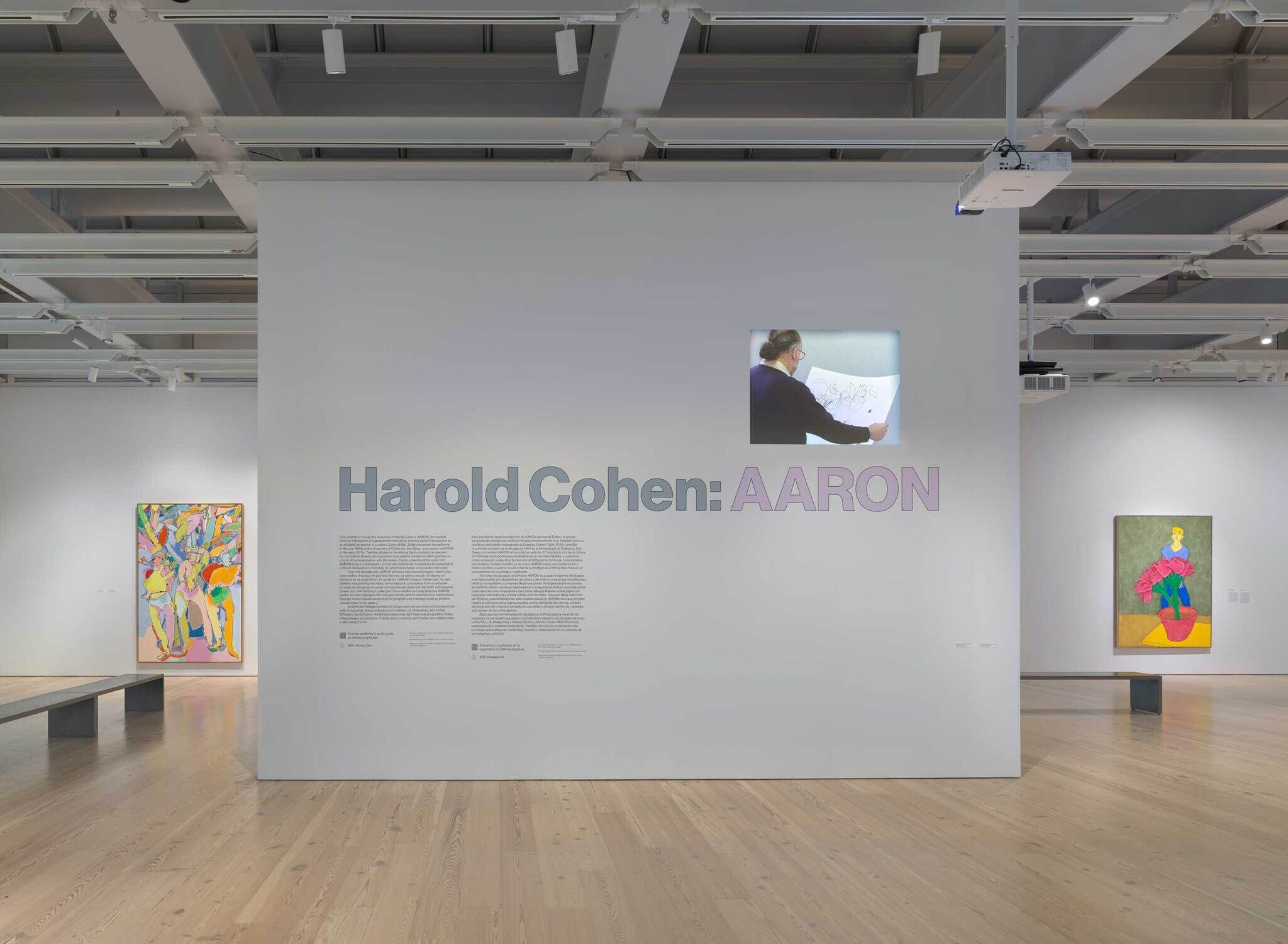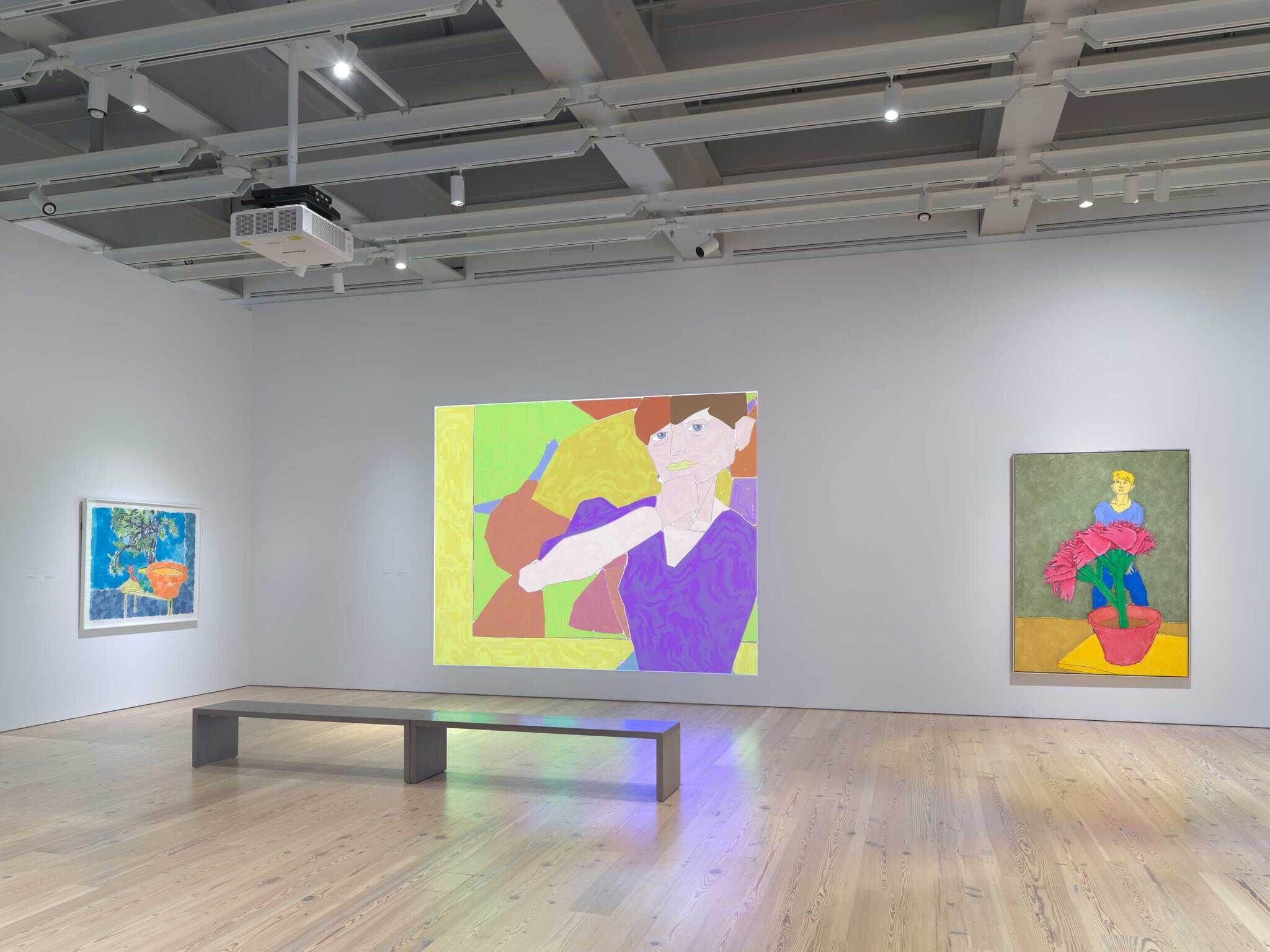Harold Cohen: AARON
Feb 3–May 19, 2024
Harold Cohen: AARON
This exhibition traces the evolution of Harold Cohen’s AARON, the earliest artificial intelligence (AI) program for artmaking. Leaving behind his practice as an established painter in London, Cohen (1928–2016) conceived the software in the late 1960s at the University of California, San Diego, and named it AARON in the early 1970s. The title alludes to the biblical figure anointed as speaker for his brother Moses, and questions how artistic creation is often glorified as a form of communication with the divine. Cohen understood his work with AARON to be a collaboration, and he devoted his life to exploring the potential of artificial intelligence to translate an artist’s knowledge and process into code.
Over the decades the AARON software has created images meant to be executed by drawing and painting devices, as well as visuals for display on monitors or as projections. To generate AARON’s output, Cohen built his own plotters and painting machines, which interpret commands from a computer to make line drawings on paper with automated pens and add color with brushes. Drawn from the Whitney’s collection, this exhibition not only features AARON works, but also highlights the software as the central creative force behind them through screen-based versions of the program and drawings made by plotters operating live in the gallery.
As artificial intelligence tools for image creation have entered the mainstream with text prompt–driven software such as DALL-E, Midjourney, and Stable Diffusion, Harold Cohen: AARON provides important historical perspective. It also offers deeper explorations of ideas about creativity, authorship, and collaboration in the context of AI.
This exhibition is organized by Christiane Paul, Curator of Digital Art, with David Lisbon, Curatorial Assistant.
Generous support for Harold Cohen: AARON is provided by Judy Hart Angelo.
Significant support is provided by Joan and Irwin Jacobs.
Additional support is provided by the Bell Family Foundation and David L. Diamond.












